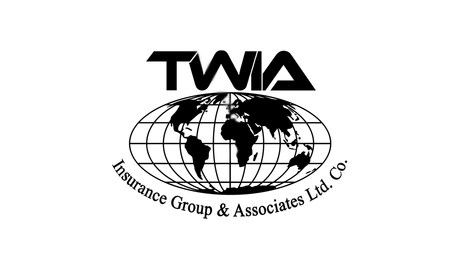TWIA Commercial Property & Casualty
DOJ sues ship owner for $100M over Baltimore bridge collapse
Dive Brief:
- One day after the families of three dead construction workers announced that they plan to sue the owner and manager of the cargo ship Dali, the Department of Justice filed a civil claim against the companies, also over the March 26 Key Bridge collapse in Baltimore.
- Filed in the U.S. District Court of Maryland Wednesday, the DOJ seeks to recover over $100 million in costs incurred by the federal government in responding to the collapse, as well as a yet-to-be-determined amount in punitive damages. The suit names Grace Ocean Private Limited and Synergy Marine Private Limited, the Singaporean owner and operator of the cargo ship Dali, which ran into one of the bridge’s piers.
- The DOJ claims the defendants negligently cut costs, which jeopardized the safe operation of the ship.
Dive Insight:
Dozens of federal, state and local agencies responded to the collision and its cleanup, which affected traffic on nearby I-695 as well as shipping traffic along the Fort McHenry Channel. Work to remove roughly 50,000 tons of steel, concrete and asphalt from the channel and off of the ship, as well as work to open temporary channels, was costly.
The disaster will continue to impair the region for years to come.
“All told, it took months to restore the Fort McHenry Channel and reopen the port to its normal capacity, and it will take years to build a new bridge. The Baltimore region continues to feel the adverse impacts of this entirely avoidable tragedy,” the suit states.
The DOJ hopes to hold the companies accountable, although the owner and manager have asked the court to limit its liability to $44 million.
Acting Deputy Assistant Attorney General Chetan Patil said on a call Wednesday that the DOJ seeks:
- Approximately $74 for the U.S. Army Corps of Engineers.
- Approximately $22 million for the U.S. Coast Guard.
- Approximately $3.5 million for the Department of Labor.
- Approximately $2 million for the U.S. Navy.
- Approximately $850,000 for the National Oceanic and Atmospheric Administration.
- Approximately $800,000 for the Maritime Administration.
“Those costs should be borne by the ship’s owner and operator, not the American taxpayer,” said Benjamin Mizer, principal deputy associate attorney general.
Recovered funds would not be used by the state of Maryland to rebuild the bridge, Mizer said. The state would have to seek to recoup those costs itself. Instead, any funds the state recovered would be used to repay the federal government, as President Joe Biden has promised it will pay for the span to be rebuilt.
The companies have denied any wrongdoing, saying the collision “was not due to any fault, neglect, or want of care,” on their part, according to a filing seeking to limit liability for Ocean Private and Synergy Marine Private.
Synergy Marine did not respond to Construction Dive’s request for comment on the lawsuit. Ocean Private does not have publicly available contact information, and could not be reached by time of publication.
Investigation of negligence
DOJ sources on the call Wednesday called the actions of the Dali owner and manager reckless, negligent and senseless, saying the collapse was entirely preventable.
The suit alleges Dali had a faulty transformer, subjected to the effects of heavy vibrations. The source of those vibrations wasn’t fixed, but was retrofitted with “anti-vibration braces,” the suit says. A previous chief on the ship had informed Synergy of the issue, the suit claims.
When the transformer failed, the main engine stopped and the ship experienced its first blackout. Power should have then transferred to a backup step-down transformer with time to steer away from the bridge, but the automation “had been recklessly disabled,” the suit claims.
A backup generator, which should have turned on within 45 seconds, took over a minute before it switched on and ended the first blackout, another sign of negligence, per the DOJ.
A second power failure was caused by the use of an improper flushing pump to fuel the diesel generators that created the ship’s electricity. The pumps were not designed to recover automatically from a blackout, so the diesel engines were “starved of fuel,” and the ship suffered a second blackout.
“In so many ways, the Key Bridge has symbolized the resilience of both the State of Maryland and our Nation. … A part of our culture is gone,” U.S. Attorney for the District of Maryland Erek Barron said in the release. “Those responsible for the Key Bridge collapse will be held accountable.”
Stay Ahead in Construction: Essential Insights and Protection for Your Projects
The construction industry is the backbone of progress, constantly evolving and presenting new opportunities and challenges. As an investor, realtor, or lender in this vibrant sector, staying informed with the latest construction news is key to making smart decisions. Our blog, sourced from one of the top construction industry sites, is your gateway to staying ahead of the curve.
But what about protecting your investments and projects? Alongside these insights, we present our comprehensive Contractor Insurance Suite, designed to shield your construction projects from the unforeseen. From liability to property damage, our insurance solutions provide the security you need in an industry known for its unpredictability.
Whether you're breaking ground on a new project or managing ongoing developments, our insurance suite ensures that your financial interests are protected immediately. Discover how our tailored insurance products can be the cornerstone of your construction project's success.
Explore Contractor Insurance Solutions for Construction Success
This post was originally published on this site


